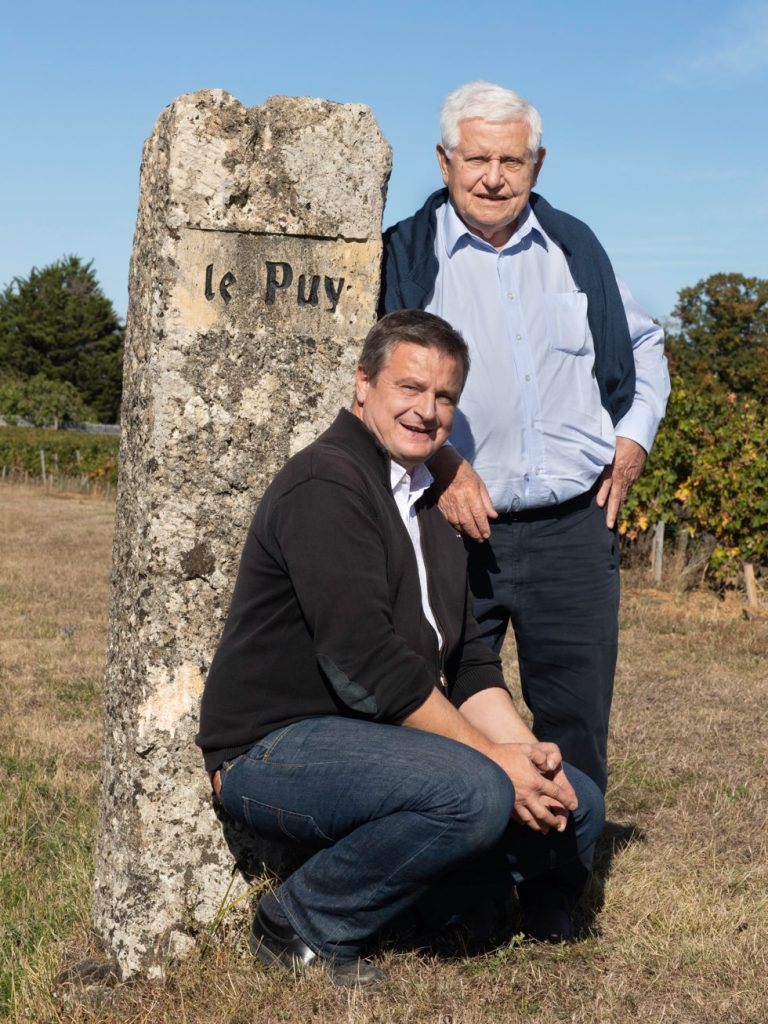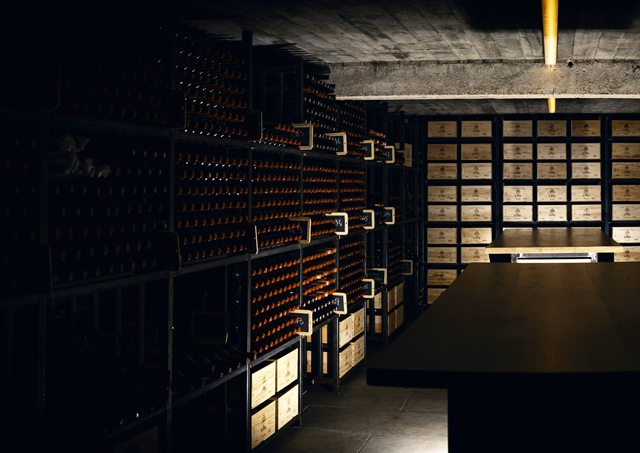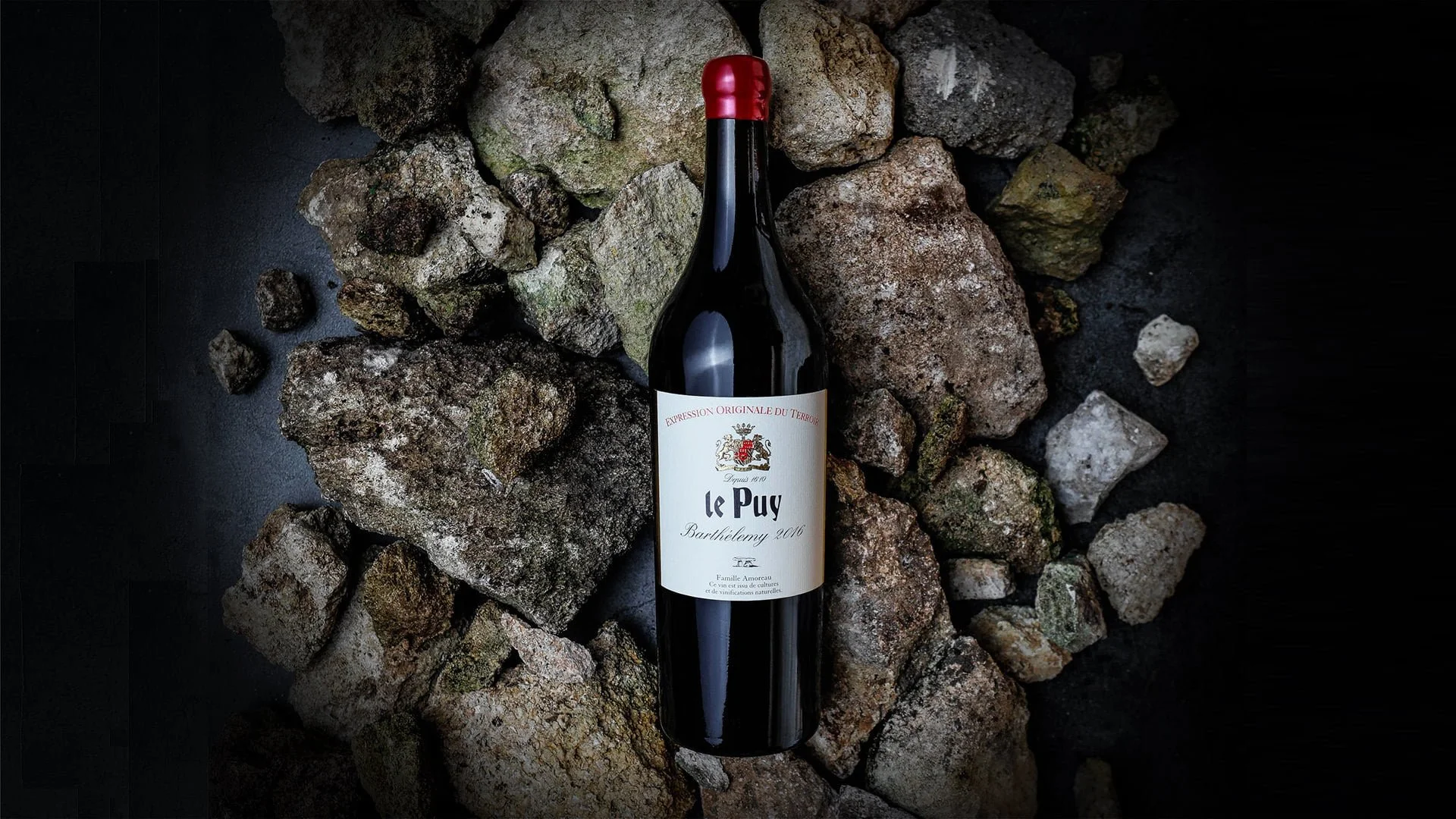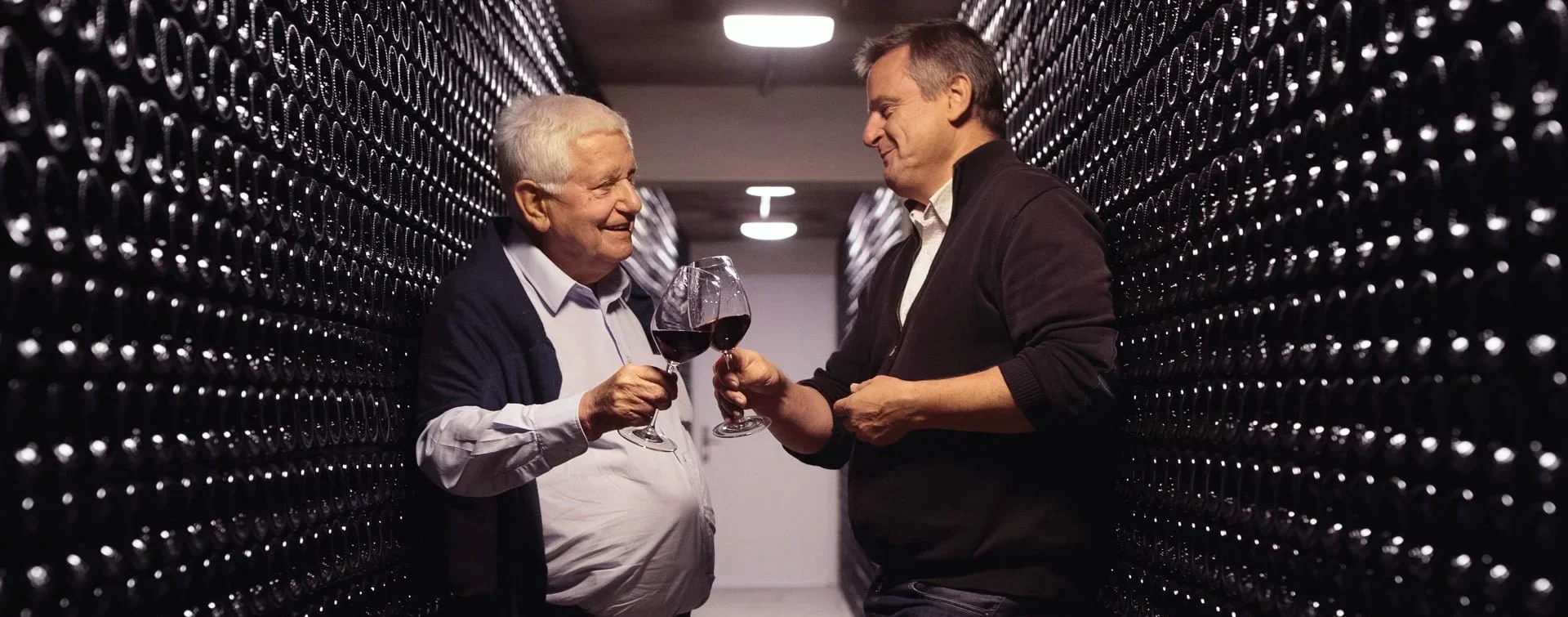Photo Credit: Château Le Puy
Meet Jean Pierre and Pascal Amoreau
Estate: Château Le Puy
Region: Francs Côtes de Bordeaux
Focus: 85% Merlot, 7% Cabernet Franc, 6% Cabernet Sauvignon, 2% Malbec, Carmenère and Semillón

Photo Credit: Rosenthal Wine Merchants
Background
Château Le Puy has continuously operated as a family-owned estate since 1610, located in the beautiful Dordogne Valley, part of the Francs Côtes de Bordeaux region. The estate has been passed down through generations, with Barthélémy Amoreau, Jean Pierre’s great-grandfather, expanding the original 17th-century structure in 1832. Today, it’s still managed by Jean Pierre Amoreau, alongside his son Pascal—contributing to the legacy of the 15th generation of Amoreaus working on the land.
What truly sets Château Le Puy apart is its commitment to preserving the natural terroir of its land. Central to its approach is a dedication to biodynamics, focusing on creating a sustainable, self-sufficient ecosystem that fosters the healthiest possible environment for the vines. Pascal led the estate to receive its Demeter biodynamic certification in 2013—proof that each red and white Bordeaux blend allows the natural characteristics of the land and grapes to shine.

Photo Credit: Château Le Puy
Vineyards
Château Le Puy’s vineyards cover about 125 acres, with vines that average around 50 years old. They’re planted on a mix of limestone, clay and flint soils, all certified biodynamic. Since its beginnings, the estate has avoided using any synthetic or chemical treatments on the land. As a result, Château Le Puy became one of the first Bordeaux estates certified for organic wine production.
In the 1970s, the Le Puy family adopted a holistic approach to viticulture, focusing on creating a biodiverse environment around their vines. Certain vine plots were removed and replaced with ponds, forests, orchards and meadows, transforming the estate into a fully diversified ecosystem—a practice now recognized as “agri-forestry.” The idea behind this method is that diverse plant life and other natural elements foster symbiotic relationships, allowing nature to manage pests and diseases, rather than relying on artificial interventions.
This biodynamic approach also benefits the soil’s microbial health, which directly impacts the quality of the wines produced. The soil’s natural structure, enriched by worms, microbes and bacteria, enables vine roots to penetrate deep into the limestone bedrock. To preserve this delicate soil structure, the estate reintroduced horses for plowing in 2008, replacing heavy tractors that could compact and damage the soil. Additionally, the estate relies on sheep to manage grass growth, preventing it from overtaking the vines, and cattle to help maintain the soil’s microbiome. Beehives on-site play a crucial role by pollinating the surrounding plants and vines, further strengthening the ecosystem.
One of the estate’s main vineyards, “Les Rocs,” surrounds the family home and is dedicated to producing the cuvée Barthélemy, a limited production wine of equal caliber to its Saint-Émilion and Pomerol counterparts. It lies atop the “Le Coteau des Merveilles” plateau, translated to”Hill of Wonders,” a name given by the Le Puy ancestors to honor the exceptional quality of the wines produced on their land.

Photo Credit: Château Le Puy
Wines
After manual harvesting and de-stemming, grapes are stored in cement vats for fermentation, relying on native yeasts and no additives. Le Puy uses an infusion fermentation method, allowing natural diffusion and integration of tannins, which enhances the wine’s texture, finesse and harmony. After fermentation, the wine matures in used oak barrels and foudres for at least two years in cellars that are not temperature-controlled—allowing wines to “live” and develop a unique robustness. The estate practices minimal intervention during maturation, using only steam and spring water for cleaning.
At Le Puy, each vintage is crafted without sulfur. By ensuring the grapes are healthy at harvest, the wines are able to naturally protect themselves. To support this, the wines are dynamized several times a week, following a lunar calendar that’s been in use for generations. This special bâtonnage method, unique to Château Le Puy, enhances the wine’s depth and texture while also offering protection. Once bottled, all wines are sealed with wax—a longstanding tradition that enhances conservation and allows the vital air exchange needed for natural aging.
Like most Right Bank Bordeaux properties, Le Puy’s reds are primarily Merlot, with smaller amounts of Cabernet Sauvignon and other varieties. The estate also produces a small batch of sweet white wine, Marie-Elisa, made entirely from Sémillon. With the exception of one, all vintages are named after a Le Puy ancestor, including Barthélemy, Emilien and more.
“Fifteen generations of the Amoreau family have worked this very special land to produce wines with a deep respect for the family expertise that has been carefully acquired and passed down. From the micro-organisms living in the soil to the various plants, animals and insects on the estate, we maintain and preserve a delicate balance that reaches the glass of wine on your table.”

Photo Source: Château Le Puy
Explore more from Château Le Puy
U.S importer: Rosenthal Wine Merchants
Thirsty for more? Follow Clink Different’s Instagram and Facebook to stay up-to-date on the latest blogs and upcoming events.
